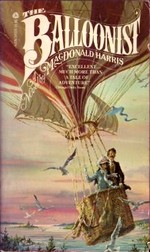
A couple of weeks ago, the L. A. Weekly published a long piece by Irish novelist John Banville on the non-Maigret novels of Georges Simenon. Although best known for the 70-plus detective novels he wrote featuring the unflappable Inspector Maigret, Simenon published a nearly-equal number of masterful psychological dramas. These romans durs, or “hard” novels, are, in Banville’s estimation, “his finest work.”
Banville admits that when he first read one of Simenon’s novels, “I was really blown away by this extraordinary writer. I had never known this kind of thing was possible, to create such work in that kind of simple — well, apparently simple — direct style.” Nine of these novels have been reissued as part of the excellent NYRB Classics series. The typical roman dur is fast, intense, and brief–rarely more than 120 pages. The protagonist–almost always a man who has led a quiet, conventional life–is jolted out of his routine by an act of violence, a momentary lapse of judgment, a flash of passion, or an instant of craven selfishness or greed. A Dutch G.P. murders his wife; a Parisian fonctionnaire finds a briefcase full of cash on a train. A Belgian cafe owner finds himself separated from his family as they flee the blitzkrieg. Or, as in the opening lines of The Accomplices, a wealthy dairy owner causes a school bus to crash, killing and maiming the children inside:
It was brutal, instantaneous. And yet he was neither surprised nor resentful, as if he had always been expecting it. He realized in a flash, as soon as the horn started screaming behind him, that the catastrophe was inevitable and that it was his fault.
It was not an ordinary horn that was pursuing him with a kind of anger and terror, but a mournful, agonizing howl such as one hears in a port on a foggy night.
At the same time, he saw in his mirror the red and black bulk of a huge bus bearing down on him and the contracted face of a man with grizzled hair, and he realized that he was driving in the middle of the road.
It did not occur to him to free his hand which Edmonde continued to press between her thighs.
Here we have all the classic ingredients of a superb Simenon: a trick of fate, an already-guilty hero (his hand between his mistress’ thighs), and a sense “that the catastrophe was inevitable and that it was his fault.” Banville writes that, “Henri Cartier-Bresson used to speak of the ‘decisive moment’ when reality is caught in its unguarded essence, and it is on such moments that Simenon builds his fictions.”
For years now, I’ve been picking up Simenons when I find them in cheap paperback editions–which has become harder and harder. It rarely takes more than a night or two to finish them, but each is a headlong plunge into the dark side of otherwise ordinary characters. Andre Gide thought Simenon possessed enormous talent but frittered it away on these melodramas. “Gide,” writes Banville, “felt that he had not achieved his full potential as an artist, which may be true: If he had tackled his obsessiveness and found a way of slowing himself down, he might have written the leisurely and long-fermented work that Gide apparently expected of him.” But as Banville rightly concludes, “[T]hat book would not have been a ‘Simenon’, and it is in the ‘Simenons’,surely, that Simenon displayed his prodigious and protean genius.”
Some ‘Simenons’ to get started with
- The Man Who Watched Trains Go By
- In print from NYRB Classics. A self-satisfied middle manager suddenly discovers that his boss has driven the company into bankruptcy. And then ….
- Monsieur Monde Vanishes
- In print from NYRB Classics. One morning, Monsieur Monde, a comfortable Parisian business man, walks out of his house as his wife is sleeping … and vanishes. And then ….
-
The Venice Train
- Still out of print. A man finds a suitcase full of money belonging to a mysterious stranger. And then ….
- The Murderer
- Still out of print. A Dutch G.P. plots and carries out the perfect murder of his aging wife and gets away with it. And then ….
 The Wall Street Journal published one of the very few, I’m sure, pieces in its history devoted to an out-of-print and neglected book recently. Titled “A Yiddish Novel With Tolstoyan Sweep,” the piece, by Joseph Epstein, describes the novel by the brother of the more famous Isaac Bashevis Singer, as “the best Russian novel ever written in Yiddish.” Epstein, former editor of the American Scholar and one of the best essayists of the last forty years, calls The Brothers Ashkenazi I. J. Singer’s best-known work–which tells you how well the rest of his oeuvre is faring these days. Depicting the contrasting careers of two Jewish brothers attempting to get ahead in the Russian Pale of Settlement before the First World War. It ends with a horrific pogrom that leaves the city of Lodz, in Singer’s words, “like a limb torn from a body that no longer sustained it. It quivered momentarily in its death throes as maggots crawled over it, draining its remaining juices.” Such, he leads us to believe, is the fate of a city that “knew that with money you could buy anything.”
The Wall Street Journal published one of the very few, I’m sure, pieces in its history devoted to an out-of-print and neglected book recently. Titled “A Yiddish Novel With Tolstoyan Sweep,” the piece, by Joseph Epstein, describes the novel by the brother of the more famous Isaac Bashevis Singer, as “the best Russian novel ever written in Yiddish.” Epstein, former editor of the American Scholar and one of the best essayists of the last forty years, calls The Brothers Ashkenazi I. J. Singer’s best-known work–which tells you how well the rest of his oeuvre is faring these days. Depicting the contrasting careers of two Jewish brothers attempting to get ahead in the Russian Pale of Settlement before the First World War. It ends with a horrific pogrom that leaves the city of Lodz, in Singer’s words, “like a limb torn from a body that no longer sustained it. It quivered momentarily in its death throes as maggots crawled over it, draining its remaining juices.” Such, he leads us to believe, is the fate of a city that “knew that with money you could buy anything.”

 “If the Ministry of Truth had devoted their full attention to obliterating the memory of Harry Sylvester, his elimination from the public consciousness could not have been more total,” writes Jenkins in this profile of a neglected American novelist. Of Sylvester’s three novels on Catholic themes, his three Catholic novels,
“If the Ministry of Truth had devoted their full attention to obliterating the memory of Harry Sylvester, his elimination from the public consciousness could not have been more total,” writes Jenkins in this profile of a neglected American novelist. Of Sylvester’s three novels on Catholic themes, his three Catholic novels,  Their responses show that undervalue, like value, is very much in the eye of the beholder. Given the wealth of academic attention paid to Flannery O’Connor’s work and the fact that
Their responses show that undervalue, like value, is very much in the eye of the beholder. Given the wealth of academic attention paid to Flannery O’Connor’s work and the fact that 
 Don Napoli has created a wonderful site,
Don Napoli has created a wonderful site,